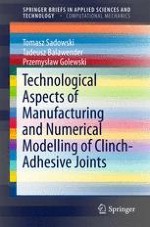This short book describes the basic technological aspects involved in the creation of purely clinch and clinch-adhesive joints made of different types of adherent materials and employing different joining technologies. Basic parameters that need to be taken into account in the design process are also presented, while a comparison of experimental testing of the hybrid joint with simple clinching for a combination of different joining materials underlines the advantages of opting for hybrid joints. The book’s conclusions will facilitate the practical application of this new fastening technology.
